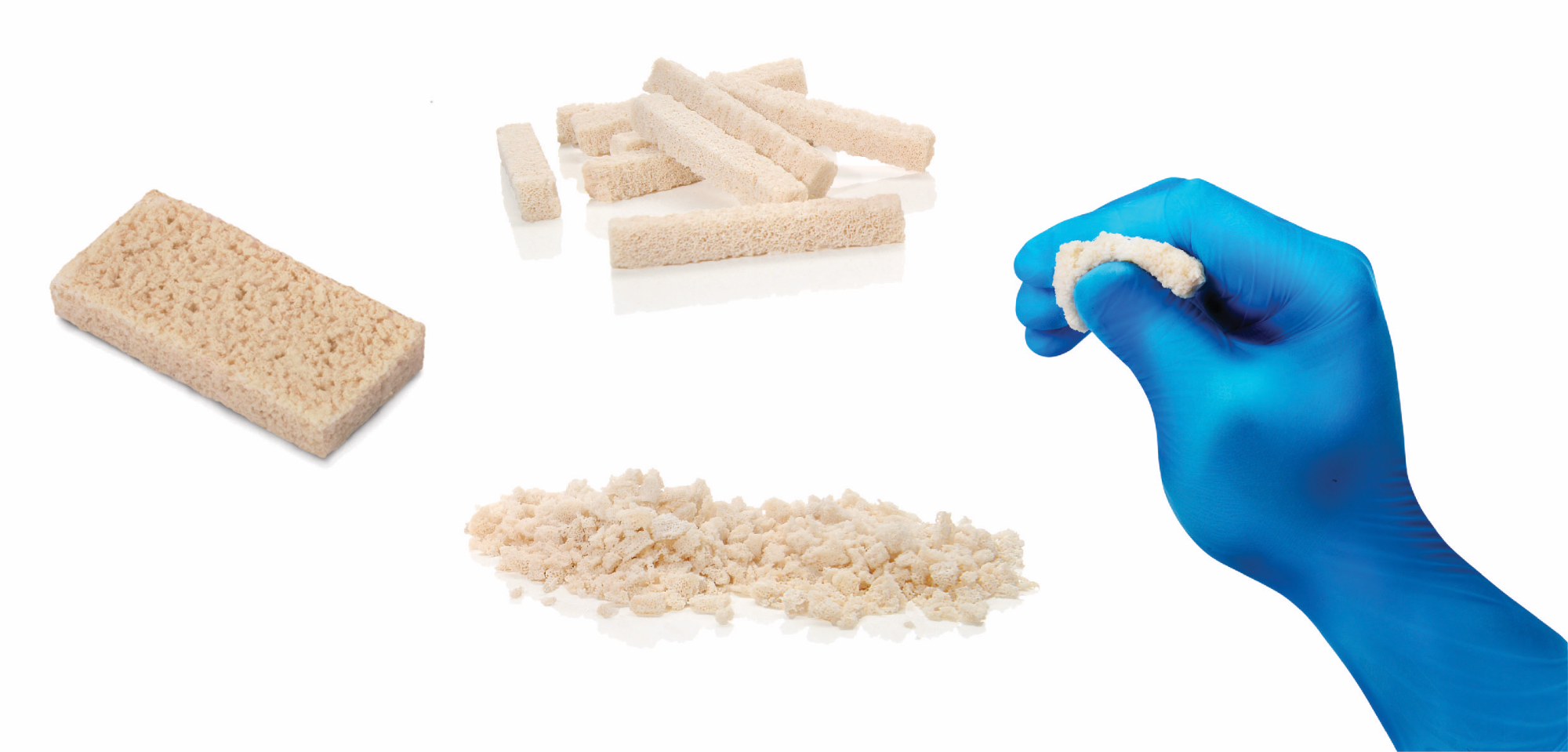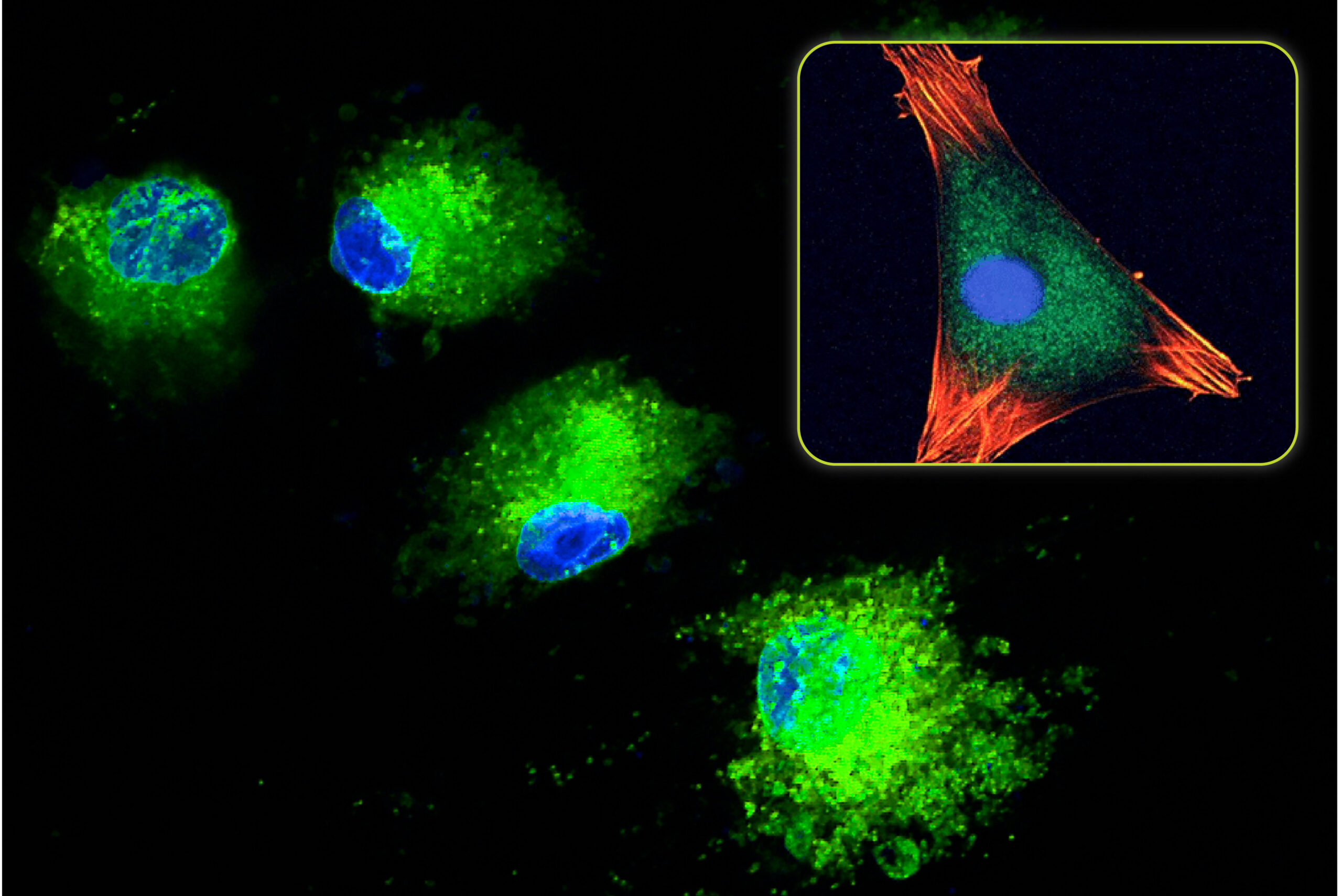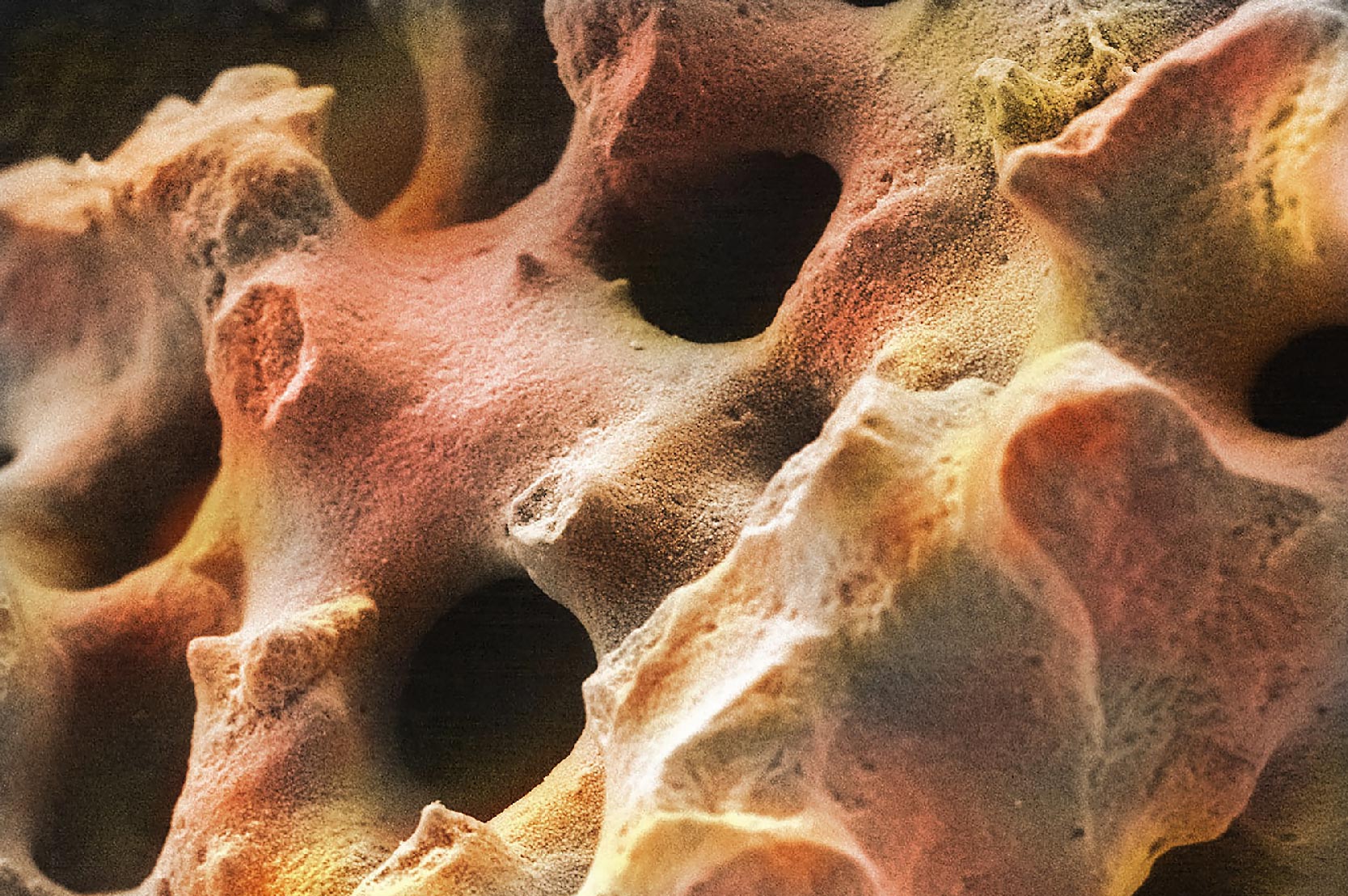4 Common Types of Bone Grafts

Bone grafting is a surgical technique that is commonly performed in orthopedic and spinal procedures. For years, bone taken from the patient (autograft) served as a surgeon’s primary graft material. However, issues with donor site pain and infection, scarring, and limited supply drove the search for alternatives to autograft.
With advancements in materials technology, tissue processing, and a better understanding of the bone regeneration process, a wide variety of different types of bone grafts have been developed and introduced to the market. Among the newest products are next-generation synthetic bone graft materials, which have advanced properties that offer many of the same benefits as other products while mitigating the risks. This guide outlines the four main different types of bone graft materials available to surgeons today.
The Four Main Types of Bone Grafts
In general, bone graft materials can be grouped into four main categories based on the material source and composition:
- Autograft
- Allograft products
- Growth factor products
- Synthetic products
Autograft
Autograft is the gold standard of bone grafting. It is harvested from the patient and consists of cortical or cancellous bone that contains live cells. The iliac crest is a common harvest site due to the ease of surgical access and availability of both cortical bone and marrow-rich cancellous bone. Since iliac crest bone is used in other areas of the body, the patient ends up with two surgical sites and two incisions.
In foot and ankle surgery, surgeons use autograft harvest sites from the same leg where the bone graft is needed. These surgeons will use bone harvested from the calcaneus (heel bone) or lower tibia/fibula (leg bones). In spine fusion surgery, surgeons can avoid a second surgical harvest site by using local cortical bone removed from the posterior spinal elements. This is generated when the surgeon decorticates the posterior vertebra to prepare for fusion.
Allograft Products
Allograft is a type of bone graft consisting of human tissue and/or cells harvested from cadavers (tissue donors). Allograft is derived from both cortical and cancellous bone. This bone is cleaned, disinfected, and eventually processed into powders, blocks, or shaped implants.
Bone can also be further processed to remove the mineral component and expose proteins capable of stimulating bone formation. This type of allograft, called demineralized bone matrix (DBM), is commonly found in a particle, fiber, or cancellous sponge form. DBM powder and fibers can also be mixed with a carrier to form moldable putties or gels. Additionally, allograft processing can be done in a manner that isolates and maintains live bone marrow cells. Since these cells are non-immunogenic, they can be harvested from a tissue donor and used in any patient.
Growth Factor Products
Growth factors are a type of bone graft product typically consisting of specific proteins, such as bone morphogenetic protein (BMP). These proteins have been shown to positively influence the bone formation response. In bone grafting procedures, a porous scaffold is needed to support the bone formation response. Therefore, growth factor products consist of the recombinantly manufactured growth factor component, which is rehydrated into a solution, and a porous material that absorbs the fluid and functions as a scaffold to support bone formation.
Synthetic Products
The synthetic bone graft category encompasses many types of bone grafts, all of which are derived from man-made materials. Synthetic bone graft materials were specifically designed to provide an alternative to autograft. They are manufactured from biocompatible ceramics, glasses, polymers, and collagen (animal-derived) and are intended to function as a scaffold for bone formation. Synthetic bone grafts are also resorbable, and will eventually be replaced by the patient’s own bone following the healing response. Synthetic bone graft products are found in granule and block form. Granules may be further processed into putties and sheet-based products when combined with a carrier.

Choosing The Right Material for Your Procedures
Due to the variety of bone graft options, surgeon preference can vary widely and is influenced by a number of factors. Surgeons will evaluate different types of bone graft products based on their clinical efficacy, form (sheet, putty, etc.), and handling. Surgeons also like versatile products that can be used in combination with autograft or bone marrow aspirate.
With recent advances in bone graft technology, more surgeons are seeking products with enhanced properties, such as biological activity, to ensure good clinical results. Next-generation synthetic materials are rapidly becoming the new standard for bone fusion procedures due to their versatility, advanced biological properties, and optimal handling. Synthetic options are also favorable due to their consistent nature since they are not dependent on donor tissue properties.
As a recognized leader in advanced bone graft technologies, Biogennix is committed to bringing high-quality educational content to our field. This blog will cover technical topics ranging from basic bone graft science to advanced osteobiologic principles. We’ll also discuss market trends and industry challenges. We thank you for reading and invite you to learn more about us here.


